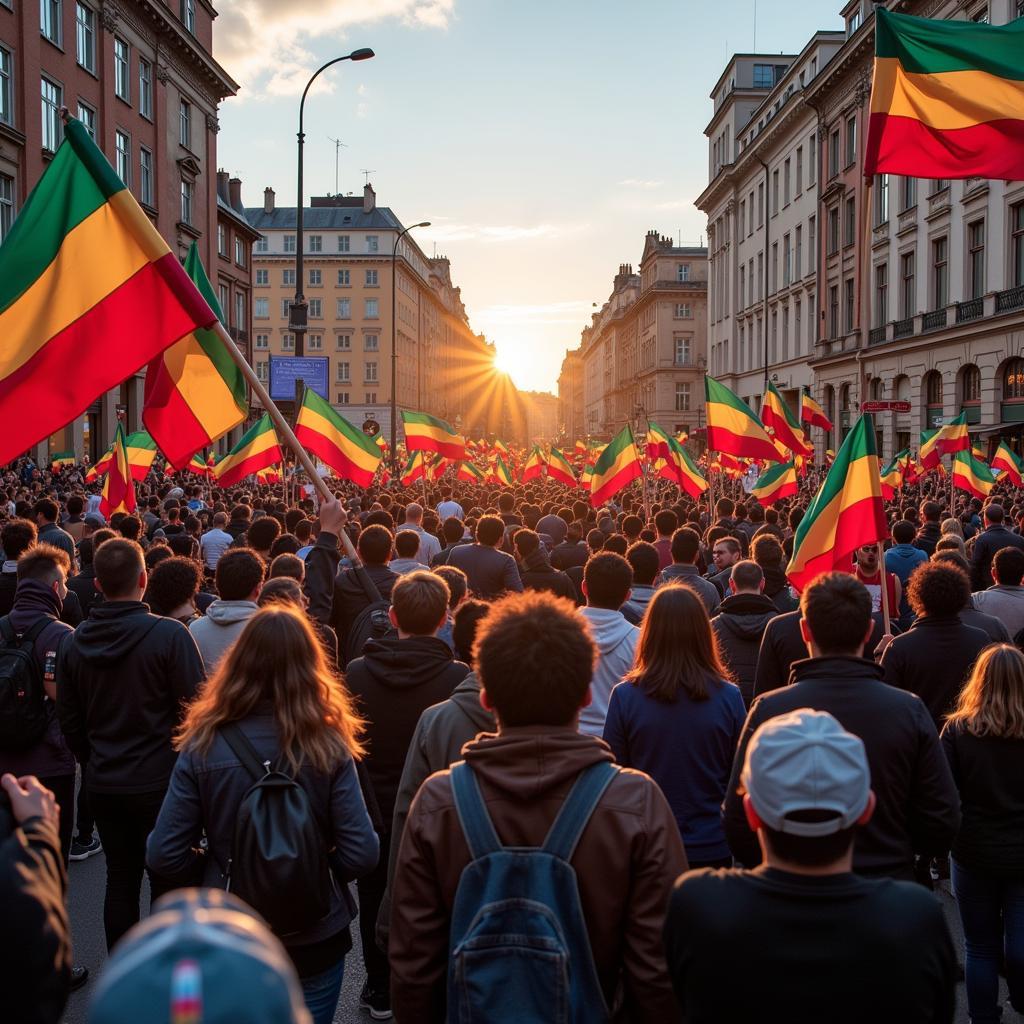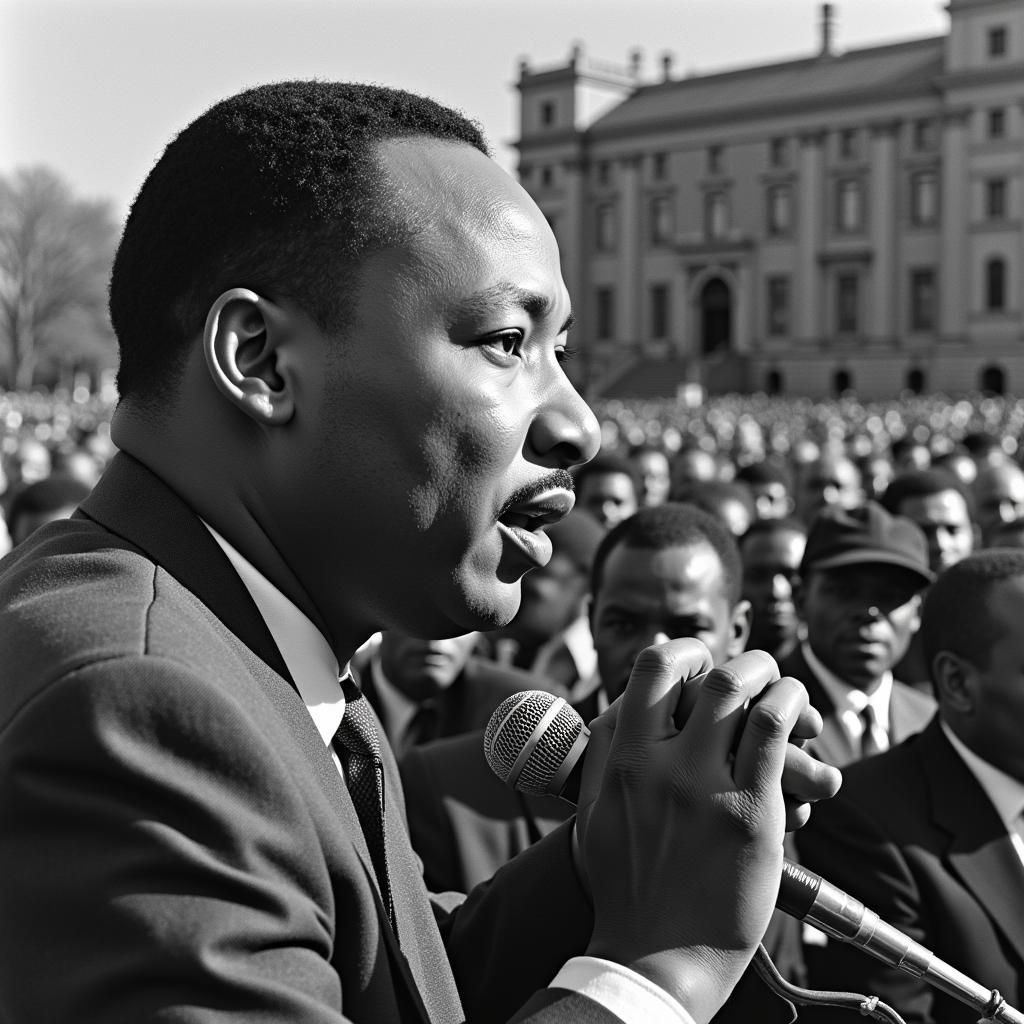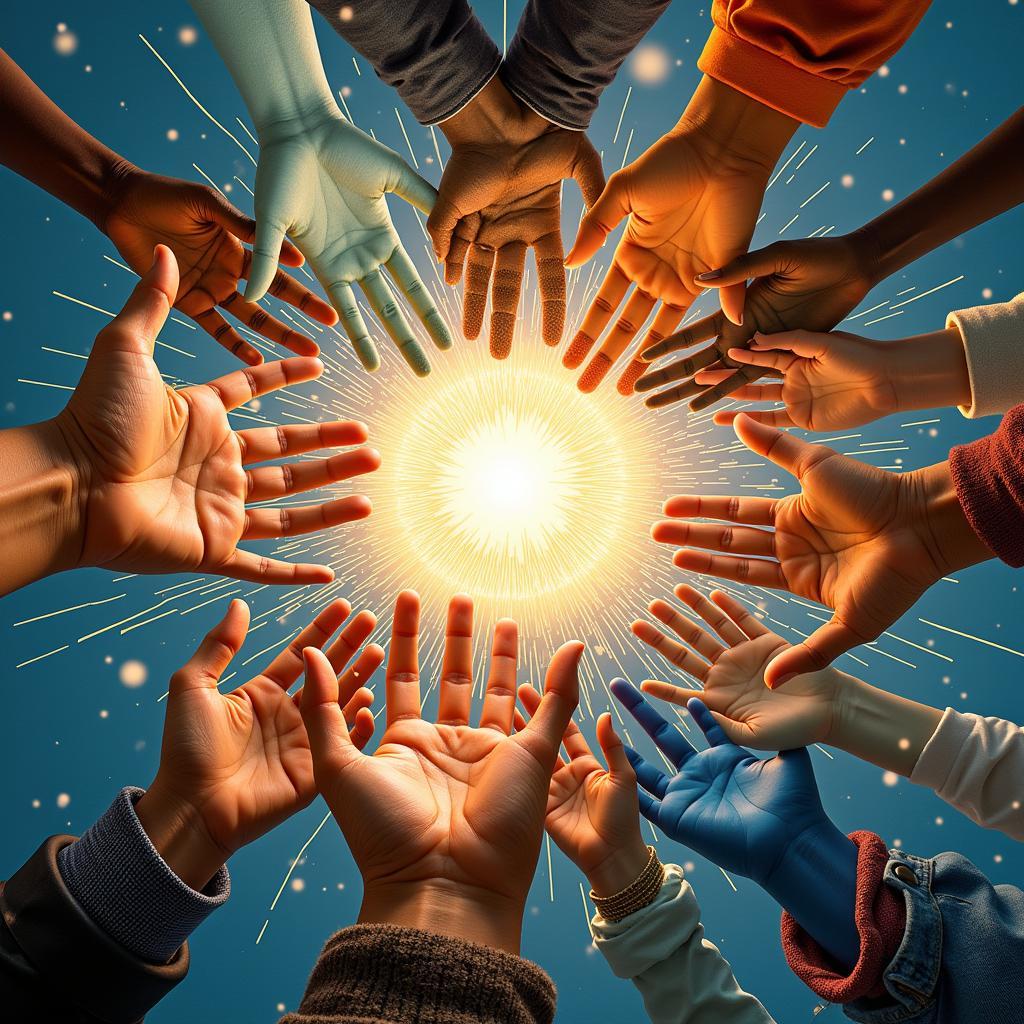The question of “How Much Violence Is Justified In Changing Society” is a complex and deeply unsettling one. It strikes at the heart of our values, ethics, and understanding of progress. While history is rife with examples of violent revolutions and uprisings that led to societal shifts, it’s crucial to critically examine the true cost of such actions and explore alternative paths toward positive change.
 Large crowd engaged in a peaceful demonstration, holding signs and banners advocating for social change
Large crowd engaged in a peaceful demonstration, holding signs and banners advocating for social change
The Seductive Illusion of Violence
Violence, by its very nature, is destructive. It leaves scars – physical, emotional, and societal – that can take generations to heal. Often, the immediate gains achieved through violent means come at a steep price, often perpetuating cycles of resentment and retribution that further destabilize societies.
While some argue that violence is sometimes necessary to dismantle oppressive systems, history shows us that it often leads to further suffering and injustice. The French Revolution, though initially aimed at toppling tyranny, descended into the Reign of Terror. The Russian Revolution, intended to liberate the working class, ultimately gave rise to a totalitarian regime. These examples, though separated by time and context, illustrate the slippery slope of justifying violence for a “greater good.”
The Power of Nonviolent Resistance
In contrast to the destructive path of violence, history offers compelling examples of nonviolent resistance movements that achieved profound social transformations. Mahatma Gandhi’s Satyagraha movement in India, Martin Luther King Jr.’s fight for civil rights in the United States, and the People Power Revolution in the Philippines demonstrate the extraordinary power of nonviolence in dismantling injustice and inspiring lasting change.
 Black and white photo of Martin Luther King Jr. delivering his iconic "I Have a Dream" speech to a massive crowd.
Black and white photo of Martin Luther King Jr. delivering his iconic "I Have a Dream" speech to a massive crowd.
These movements, though diverse in their contexts, shared common threads: unwavering commitment to nonviolent principles, strategic organization, and a deep-seated belief in the power of truth and justice to prevail. They proved that lasting change emerges not from the barrel of a gun but from the collective will of people united by a common vision for a better future.
Building a Just and Equitable Society
Creating a truly just and equitable society requires a fundamental shift in our approach to conflict and change. It demands that we move beyond the simplistic binary of violence versus passivity and embrace the transformative power of nonviolent action. This entails:
- Fostering Dialogue and Understanding: Open and honest dialogue, even with those who hold opposing views, is crucial to bridging divides and finding common ground.
- Addressing Root Causes: Systemic issues like poverty, inequality, and discrimination are often the underlying drivers of conflict. Addressing these root causes is essential for creating lasting peace.
- Empowering Marginalized Voices: Amplifying the voices of those who have been marginalized and silenced is critical to building a more just and inclusive society.
- Promoting Education and Empathy: Education plays a vital role in fostering critical thinking, empathy, and a commitment to nonviolent conflict resolution.
The Path Forward
The question of “how much violence is justified in changing society” should not be framed as a binary choice. The true measure of a society’s progress lies not in its capacity for violence but in its commitment to justice, equality, and the pursuit of peaceful transformation. By embracing nonviolent approaches, engaging in constructive dialogue, and actively dismantling systems of oppression, we can build a world where violence is not a tool for change but a relic of the past.
 People from various backgrounds stand in a circle, their hands interlocked, symbolizing unity and solidarity.
People from various backgrounds stand in a circle, their hands interlocked, symbolizing unity and solidarity.
FAQ
1. But what about situations where violence is used in self-defense against an oppressive force?
The principle of self-defense is complex and often debated. While this article focuses on violence as a tool for societal change, it’s important to acknowledge the right to self-defense in situations of immediate threat. However, even in such cases, exploring nonviolent alternatives and de-escalation strategies should remain a priority.
2. Haven’t there been instances where violence was necessary to achieve freedom?
History is replete with examples of violent revolutions and uprisings. While some argue that these instances were necessary, it’s crucial to critically examine the long-term consequences of such actions and explore whether alternative paths could have led to more just and sustainable outcomes.
3. What can I do to promote peace and nonviolence in my own community?
Start by engaging in open and respectful dialogue with those who hold different views. Support organizations working for social justice and conflict resolution. Educate yourself and others about the principles of nonviolence. Every act of kindness, empathy, and understanding contributes to building a more peaceful world.
Need support or guidance on promoting peace and understanding? Reach out to us!
Hotline: 02043854663
Email: [email protected]
Address: Khu 34, Bac Giang, 260000, Vietnam
Our dedicated team is available 24/7 to assist you. Let’s build a more peaceful world together.